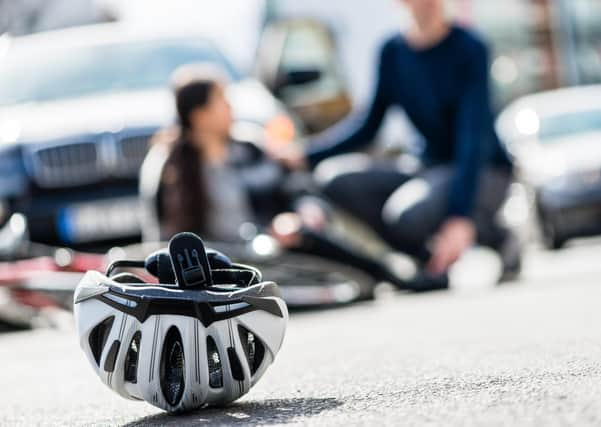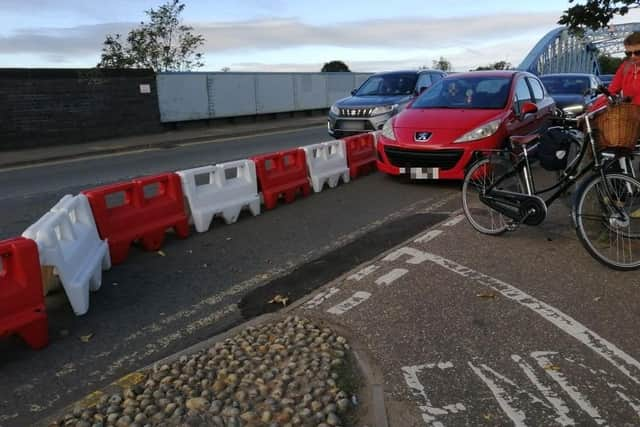Local authorities urged to cut road casualties among cyclists as more people take to their bikes thanks to pandemic


With official government data showing over 17,000 cyclists were injured or killed on the UK’s roads last year, a leading charity says safety is a key barrier to more people making the switch to cycling.
Figures from the Department for Transport (DfT) and Police Service of Northern Ireland (PSNI) analysed by the JPIMedia Data Unit reveal that the total number of cycling casualties in the East of England in 2019 was 1,464.
Advertisement
Hide AdAdvertisement
Hide AdThat equated to 23 casualties per 100,000 people in a population of over six million, or four per day.


The total number of casualties has steadily decreased each year since 2016 when the figure was a high of 1,778, a drop of 18 per cent. There have been a total of 6,446 casualties throughout those four years in the region.
According to Cambridgeshire Police, in 2019 there were two fatal pedal cyclist casualties in Cambridgeshire, both male, aged 68 and 77 years. One was a pedal cycle in collision with a van, the other was a bicycle in collision with a car.
In the UK as a whole, there have been 410 cyclists killed since 2016.
Advertisement
Hide AdAdvertisement
Hide AdWhile the overall number of casualties has fallen every year since 2016, the number seriously injured has increased by nine per cent.


Last year 102 cyclists lost their lives, nearly 4,000 were seriously injured and over 3,000 were slightly injured.
Only incidents reported to police are included, while figures prior to 2016 cannot be compared as many police forces changed their definition of a serious injury.
The average age of casualty was 36 last year, with the vast majority of victims being men.
Advertisement
Hide AdAdvertisement
Hide AdDaisy Narayanan, director of urbanism at walking and cycling charity Sustrans, said safety is a key barrier to more people taking up cycling.
“Only 28 per cent of residents from 12 UK urban areas believe cycling safety in their city to be good. Therefore, while cycling is a relatively safe activity, we need to continue to make our streets safer for people who cycle and to increase people’s perception of safety.
“Positive change is already taking place across the country. The UK Government’s Gear Change Walking and Cycling Vision published in July aims to radically improve the quality of walking and cycling infrastructure.
“However, in order to ensure cycling safety across the board, we need strong leadership in walking and cycling at the local level. Local authorities should work to create safer, better streets and places through the implementation of protected cycle routes and low traffic neighbourhoods, whilst taking into account the local context”.
Advertisement
Hide AdAdvertisement
Hide AdA spokesperson for the Department for Transport said it is investing billions to make cycling safer.
“We continue to work hard to make our roads as safe as possible safe for vulnerable users, and the decrease in the number of cyclist casualties from the previous year is encouraging.
“We’re investing an unprecedented £2 billion to support cycling and walking over the next five years, including for safe high-quality infrastructure, and proposing changes to The Highway Code to further protect cyclists, pedestrians and horse riders.”
During the pandemic the government set out £2bn – the largest ever boost for cycling and pedestrians – which included creating emergency bike lanes and streets to help support the transport network, wider pavements, safer junctions, and cycle and bus-only corridors.
Advertisement
Hide AdAdvertisement
Hide AdA new, pop-up cycle lane was created on Crescent Bridge in Peterborough. But initially cars were spotted squeezing down the cycle lane in September.
The city already has the Peterborough Green Wheel - Sustrans-backed network of routes in and around the city created as part of a Millennium project.
They told councils to reallocate road space for significantly-increased numbers of cyclists and pedestrians.
They issued vouchers for cycle repairs, to encourage people to get their old bikes out of the shed, and developed greater provision of bike fixing facilities.
Advertisement
Hide AdAdvertisement
Hide AdThere is also the Government’s Cycle to Work scheme, which gives employees a discount on a new bike.
A total of £225 million of funding is available to Local Authorities through the Active Travel Fund for implementing safe infrastructure for cyclists and pedestrian.
Overall pedal cyclist casualties decreased by four per cent between 2018 and 2019.
The Department’s recently revised Cycle Infrastructure Design Guidance provides the latest advice regarding the design of safer, high quality infrastructure for cyclists.
Advertisement
Hide AdAdvertisement
Hide AdA consultation on proposed changes to the Highway Code closed on October 27 and the Government is considering the evidence submitted and will respond in due course.
Based on the latest figures from the DfT and PSNI for 2019:
* 47 cyclists were injured or killed on the UK’s roads every day in 2019
* 102 (1%) were killed; 3,752 (22%) were seriously injured; 13,320 (78%) were slightly injured
* The average age of the casualty in GB was 36 and 80% of casualties were male; 20% female
* While the overall number of cycling casualties has generally fallen since 2016, there has been a 9% rise in the number of people seriously injured: